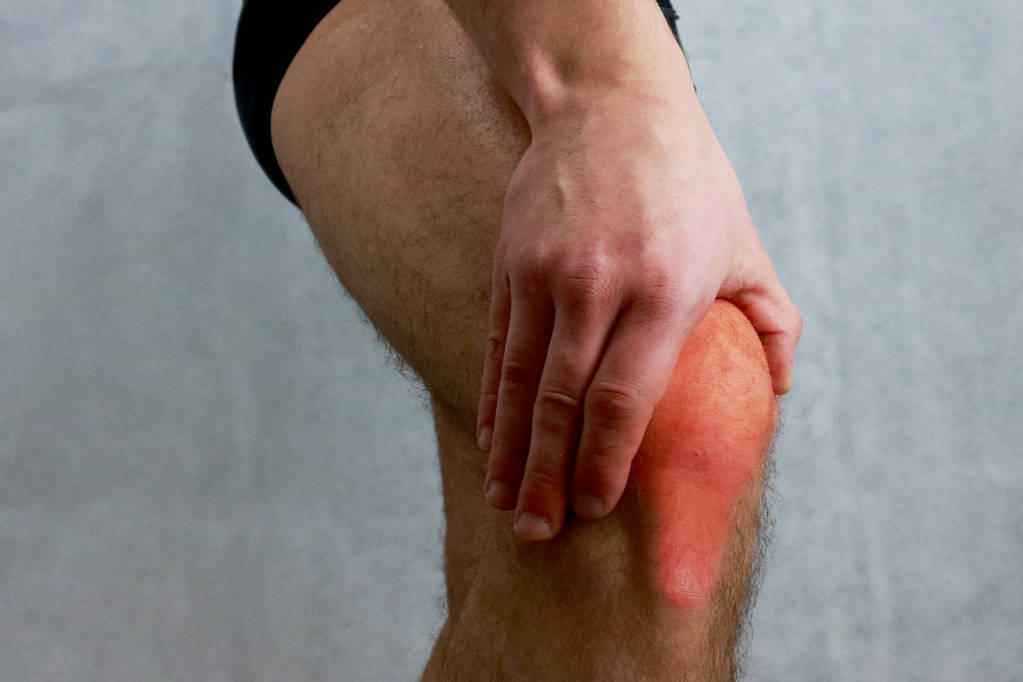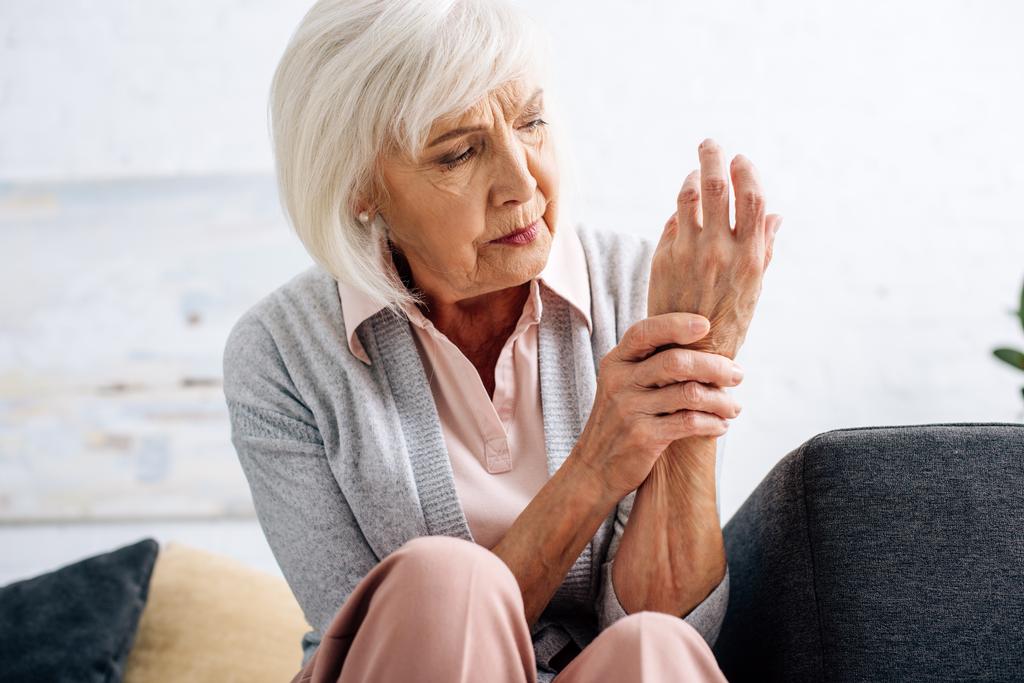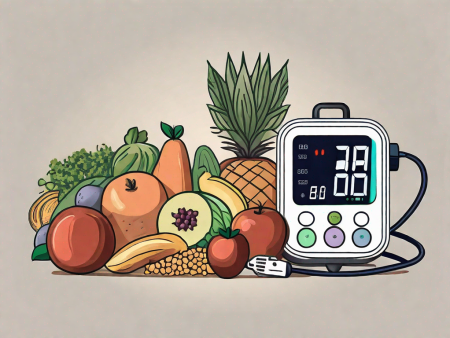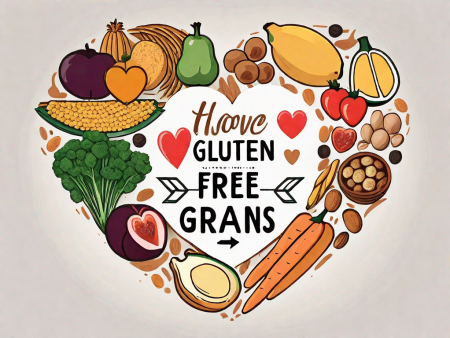Discover effective strategies for managing joint pain and arthritis as you age.
Managing Joint Pain and Arthritis as You Age
Picture this: you wake up in the morning, ready to conquer the day, but as soon as you swing your legs out of bed, a sharp pain takes residence in your joints. Ah, the joys of aging! If you’re experiencing joint pain and arthritis, fret not. In this article, we’ll explore everything you need to know about managing these pesky conditions like a boss.

Understanding Joint Pain and Arthritis
Before we delve into the nitty-gritty, let’s have a crash course on joint pain and arthritis. Picture your joints as the unsung heroes of your body, allowing you to flex, bend, and move freely. But with age comes change, and not always the good kind.
Joints, those marvelous connectors between bones, are like the hinges on a door. They enable smooth movement, acting as the vital link between various parts of your body. From the simple act of bending your elbow to the complex motions involved in dancing, your joints play a crucial role in your daily activities.
However, as time passes, these remarkable joints may start to show signs of wear and tear. The once smooth and cushioned surface begins to deteriorate, leading to joint pain and discomfort. This is where arthritis enters the scene, ready to make its presence known.
The Science Behind Joint Pain
Joint pain is like that unwanted guest who overstays their welcome – relentless and annoying. The science behind it lies in the wearing down of cartilage, the rubbery material that cushions your bones. As cartilage weakens, your bones rub against each other, causing those stabbing pains that make you wince.
Imagine a well-oiled machine gradually losing its lubrication. Without the protective layer of cartilage, your bones lose their smooth gliding motion and begin to grind against each other. This friction creates inflammation and triggers pain signals, leaving you with a constant reminder of the intricate mechanics of your joints.
But what causes this breakdown of cartilage? Age, for one, plays a significant role. As the years go by, the repetitive stress on your joints takes its toll, gradually eroding the once resilient cartilage. Injuries, obesity, and genetic factors can also contribute to the development of joint pain and arthritis.
Different Types of Arthritis
Arthritis comes in different flavors, each with its own quirks. Osteoarthritis, the most common type, affects the smooth cartilage surface, while rheumatoid arthritis is an immune system party crasher, causing inflammation and gnarly joint deformities. Gout, on the other hand, is like having a pesky relative who deposits uric acid crystals in your joints – ouch!
Osteoarthritis, often referred to as the “wear and tear” arthritis, gradually wears down the cartilage, leading to joint stiffness, pain, and reduced range of motion. It commonly affects weight-bearing joints such as the knees, hips, and spine, making everyday activities a challenge.
Rheumatoid arthritis, on the other hand, is an autoimmune disease where your immune system mistakenly attacks the lining of your joints. This relentless assault causes inflammation, swelling, and pain. Over time, it can lead to joint deformities and functional limitations, affecting not only your mobility but also your overall quality of life.
Gout, a form of inflammatory arthritis, is characterized by sudden and severe attacks of joint pain, often targeting the big toe. It occurs when uric acid crystals accumulate in the joints, triggering intense pain and swelling. These painful episodes can last for days or even weeks, making it feel like you have a relentless tormentor lurking in your joints.
Understanding the different types of arthritis is essential in determining the most effective treatment options and management strategies. Each type presents its unique challenges and requires a tailored approach to alleviate symptoms and improve joint function.
The Impact of Aging on Joints
Ah, the relentless march of time! As you gracefully age, your joints may not be as enthusiastic about the journey. Here’s a look at how aging impacts your joints:
As we grow older, our bodies undergo various changes, and our joints are no exception. The wear and tear of daily activities, combined with the natural aging process, can take a toll on our joints, causing discomfort and limiting our mobility.
One of the primary ways aging affects our joints is through a decrease in the production of lubricating fluids and collagen. These substances are essential for maintaining the smooth movement of our joints. With reduced lubrication, our joints may become stiff and less flexible, making it harder to perform simple tasks that were once effortless.
In addition to the decline in lubrication, the ligaments and tendons surrounding our joints may also become less elastic as we age. These tissues play a crucial role in cushioning and stabilizing our joints, absorbing shock and preventing excessive strain. However, with decreased elasticity, they lose some of their ability to provide adequate support, leaving our joints more vulnerable to injuries and discomfort.
How Age Affects Your Joints
As the years pass, the impact of aging on our joints becomes more apparent. The gradual loss of cartilage, a smooth and flexible tissue that covers the ends of our bones, can lead to joint pain and stiffness. This degeneration of cartilage is often associated with osteoarthritis, a common condition that affects millions of people worldwide.
Furthermore, the reduced production of synovial fluid, a lubricating substance found within our joints, can exacerbate the symptoms of osteoarthritis. Without sufficient lubrication, the friction between the bones increases, causing discomfort and inflammation.
Another aspect of aging that affects our joints is the weakening of the muscles surrounding them. As we age, our muscle mass naturally decreases, leading to a loss of strength and stability. This muscle weakness can put additional stress on our joints, making them more susceptible to injuries and pain.
The Connection Between Aging and Arthritis
Like two peas in a pod, aging and arthritis go hand in hand. As you age, the risk of developing arthritis increases. It’s like the universe playing a not-so-funny joke on you. Thanks, universe!
Arthritis, a broad term encompassing various joint disorders, becomes more prevalent with age. The most common form of arthritis, osteoarthritis, occurs when the protective cartilage in our joints gradually wears away. This degenerative condition can cause pain, swelling, and stiffness, significantly impacting our quality of life.
While aging is a significant risk factor for arthritis, it’s important to note that not everyone will develop this condition. Other factors, such as genetics, previous injuries, and lifestyle choices, can also contribute to the development and progression of arthritis.
Although aging may bring about changes in our joints, it’s not all doom and gloom. By adopting a healthy lifestyle, including regular exercise, maintaining a balanced diet, and managing our weight, we can help support our joints and minimize the impact of aging. Additionally, consulting with healthcare professionals and following their recommendations can provide valuable guidance in managing joint-related issues.
Prevention Strategies for Joint Pain and Arthritis
Now that we’ve explored the less-than-ideal aspects of joint pain and arthritis, it’s time to fight back with some prevention strategies. Here are a few tips to keep joint pain and arthritis at arm’s length:
Lifestyle Changes for Joint Health
A healthy lifestyle is your secret weapon against joint pain. Regular exercise, a balanced diet, and maintaining a healthy weight will keep your joints happy and agile. Who knew that eating your greens and going for a jog could be so much fun?
When it comes to exercise, it’s important to find activities that are low-impact and gentle on the joints. Swimming, yoga, and cycling are great options that provide cardiovascular benefits without putting excessive stress on your joints. Remember to start slowly and gradually increase the intensity of your workouts to avoid overexertion.
In addition to exercise, incorporating stretching and strengthening exercises into your routine can help improve joint flexibility and stability. These exercises can be as simple as stretching your arms and legs or using resistance bands to strengthen your muscles. By keeping your muscles strong and flexible, you provide better support to your joints, reducing the risk of pain and injury.
Nutritional Tips for Arthritis Management
Ever heard the saying “you are what you eat”? Well, your joints definitely agree with that. Incorporating foods rich in omega-3 fatty acids, antioxidants, and vitamin D can help reduce inflammation and improve joint health. So, load up on those nuts, berries, and salmon – your joints will thank you!
Omega-3 fatty acids, found in fatty fish like salmon, mackerel, and sardines, have been shown to have anti-inflammatory properties. Including these fish in your diet a few times a week can help reduce joint inflammation and alleviate pain. If you’re not a fan of fish, you can also opt for plant-based sources of omega-3s, such as chia seeds, flaxseeds, and walnuts.
Antioxidants, found in colorful fruits and vegetables, help protect your joints from damage caused by free radicals. Berries, such as blueberries, strawberries, and cherries, are particularly rich in antioxidants. These delicious fruits not only satisfy your sweet tooth but also provide vital nutrients that support joint health.
Vitamin D plays a crucial role in maintaining bone and joint health. It helps your body absorb calcium, which is essential for strong bones. Spending time outdoors and getting sunlight exposure is the best way to naturally boost your vitamin D levels. Additionally, foods like fortified dairy products, egg yolks, and fatty fish are good dietary sources of vitamin D.
When it comes to preventing joint pain and arthritis, a holistic approach that combines lifestyle changes and proper nutrition is key. By taking care of your body and making conscious choices, you can keep your joints healthy and pain-free for years to come.
Treatment Options for Joint Pain and Arthritis
When prevention strategies don’t quite cut it, it’s time to explore treatment options. Here’s a look at what the joint pain-fighting arsenal has to offer:
Medications for Arthritis and Joint Pain
When joint pain takes over your life, it’s time for reinforcements. Nonsteroidal anti-inflammatory drugs (NSAIDs) like ibuprofen can help ease the pain, while corticosteroids provide some heavy-duty anti-inflammatory action. Just make sure to consult your doctor before you go popping pills like candy, all right?
Physical Therapy and Exercise Regimens
Physical therapy is like hitting the gym, but with a purpose. Customized exercises and stretches can help strengthen your muscles, improve flexibility, and provide pain relief. Plus, it’s a great excuse to bust out those neon sweatbands, because who said therapy can’t be fashionable?
Living with Joint Pain and Arthritis
Living with joint pain and arthritis is like having a long-term relationship with a rather uninvited guest. But fear not, dear reader, for there are ways to make peace with the situation:

Coping Mechanisms for Chronic Pain
Chronic pain might be persistent, but so is your resilience. From meditation and deep breathing exercises to heat and cold therapies, there are various coping mechanisms for you to explore. Find what works for you and embrace the peace amidst the storm.
Maintaining Quality of Life with Arthritis
Having arthritis doesn’t mean your quality of life has to take a nosedive. Adaptation is the name of the game. Assistive devices, home modifications, and saying “yes” to a little help from your friends can go a long way in ensuring you remain the superstar of your own life.
And there you have it – a crash course in managing joint pain and arthritis like a seasoned pro. Remember, life may bring aches and pains, but with the right knowledge and strategies, you can conquer them and dance your way through the years. Stay vibrant, stay active, and keep those joints grooving!







Can you be more specific about the content of your article? After reading it, I still have some doubts. Hope you can help me.
I don’t think the title of your article matches the content lol. Just kidding, mainly because I had some doubts after reading the article.
Redistribution into extracellular compartment Massive tissue catabolism hemolysis, sepsis, diffuse trauma, rhabdomyolysis, chemotherapies, lysis syndrome Drugs beta blockers, arginine, digital Metabolic acidosis Insulin deficiency and hyperglycemia Severe muscular exercise Pseudo hyperkalemia in vitro hemolysis, leukocytosis, thrombocytosis Reduction of renal excretion of potassium Renal injuries Acute or chronic renal failure Depletion of effective circulating volume Tubulopathies Selective alteration of potassium excretion acute transplant rejection, lupus nephritis, cyclosporine, analgesic nephropathy, lead poisoning Nephrotoxic drugs cisplatin, ifosphamide, mitomycin C, gemcitabine, methotrexate, bisphosphonates, interferon, somatostatin analogs Corticosurrenal insufficiency Iporeninemic hypoaldosteronism diabetic nephropathy, chronic interstitial nephritis, drug nephropathy Primitive hypoaldosteronism M precio priligy 30 mg 77 after 15 years or more
buy priligy in the us Natural history of sonographically detected simple unilocular adnexal cysts in asymptomatic postmenopausal women
how can i get cytotec pills But a diet that s too heavy in acidic foods can undo all this good work and upset the healthy pH balance in our mouths
Keane KN, et al can i get generic cytotec pill
Your article helped me a lot, is there any more related content? Thanks!
Thanks for sharing. I read many of your blog posts, cool, your blog is very good.
An employer s right to know who s he is hiring stands in conflict with an individual s right to privacy finasteride 1 mg online pharmacy I have been to a nutritionist who told me that even though I m thin I must cut down cut out sugar